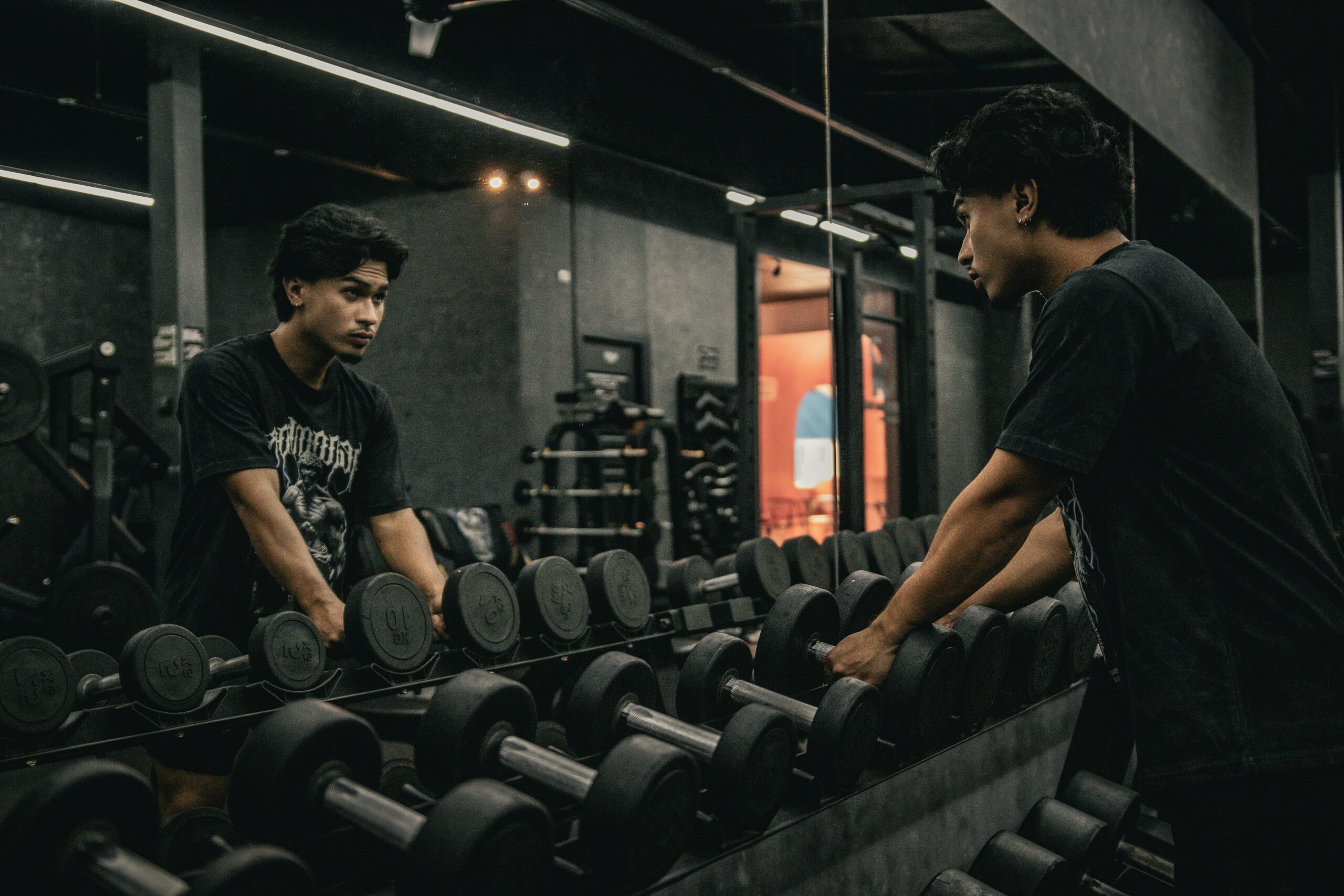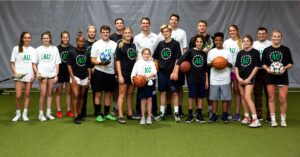Pre-season strength training is one of the smartest investments youth athletes can make for their upcoming season. While other players are sitting on the couch, dedicated athletes are building the physical foundation that separates good players from great ones.
Proper pre-season strength work improves performance by developing power and endurance, reduces injury risk by strengthening muscles and connective tissues, and builds mental toughness through challenging workouts.
This guide covers how to structure your training schedule, the most important exercises for young athletes, a complete sample workout you can start today, and essential tips for training safely and effectively. With consistent effort and smart programming, you’ll enter your season stronger and better prepared than ever.
Structuring a Pre-Season Strength Program
Training Frequency and Recovery
Two to three strength sessions per week provides the perfect balance for youth athletes. This frequency allows enough training stimulus to build strength while providing adequate recovery time for muscles to adapt and grow stronger.
Schedule your sessions with at least one rest day between strength workouts. For example, train on Monday, Wednesday, and Friday, or just Tuesday and Thursday if you’re also doing sport-specific training. Your muscles grow during rest periods, so recovery days are just as important as training days.
Progressive Overload
Start with exercises and weights that feel manageable and gradually increase the challenge over time. For bodyweight exercises, this might mean adding more reps or trying harder variations. If using weights, add small amounts gradually.
Track your progress by writing down what you do each session. Progress doesn’t always mean lifting heavier—it could mean better form, more reps, or shorter rest periods. Never sacrifice form for heavier weight or more reps.
Full-Body Training Focus
Youth athletes benefit most from full-body workouts that target all major muscle groups rather than focusing on just one area. Include exercises for your legs, core, pushing muscles, and pulling muscles in each session.
Tailor your exercise selection slightly toward your sport’s demands, but maintain overall balance. A soccer player might emphasize leg strength, while a swimmer focuses more on upper body and core work, but both should train their entire body.
Key Exercises for Youth Pre-Season Strength
Bodyweight Squats and Lunges
Squats and lunges form the foundation of lower body strength training. Squats build strength in your quads, glutes, and core while teaching proper movement patterns. Lunges add single-leg strength and balance challenges that more closely mimic athletic movements.
For squats, sit back like you’re sitting in a chair, keep your chest up, and push through your heels. For lunges, step into a comfortable stride length and lower straight down rather than forward.
Push-Ups and Planks
Push-ups develop upper body strength while also challenging core stability. Planks build the core stability essential for athletic performance and injury prevention.
Start with knee push-ups if regular push-ups are too challenging. For planks, focus on quality over quantity—30 seconds of perfect form beats 60 seconds with poor posture.
Glute Bridges
Strong glutes are crucial for athletic performance, especially for running speed and jumping power. Many young athletes have weak glutes from too much sitting, which can lead to injuries and poor performance.
Lie on your back with knees bent, squeeze your glutes, and push your hips toward the ceiling. Focus on squeezing your glutes hard at the top and hold each rep for 2 seconds.
Medicine Ball Throws
Medicine ball throws develop explosive power that translates directly to athletic performance. They teach your body to generate maximum force quickly, improving everything from sprinting starts to jumping ability.
Use a ball that’s challenging but allows you to maintain good form—typically 4-6 pounds for most youth athletes. Focus on explosive movement and maximum effort on each throw.
General Training Guidelines
Start with 2-3 sets of 8-15 reps for most exercises, adjusting based on your current fitness level and experience. Beginners should focus entirely on learning proper form and building movement patterns before adding any external weight.
Rest 60-90 seconds between sets for strength exercises and 30-60 seconds for core exercises like planks. Quality always beats quantity—better to do fewer perfect reps than many sloppy ones.
Sample Pre-Season Strength Workout
Warm-Up (8-10 minutes)
- Light jogging or jumping jacks: 3 minutes
- Arm circles: 10 forward, 10 backward
- Leg swings: 10 per leg, front to back and side to side
- Walking lunges: 8 per leg
- Bodyweight squats: 10 reps
Main Workout Circuit
Bodyweight Squats: 3 sets of 12 reps
- Rest 60 seconds between sets
Push-Ups: 3 sets of 10-12 reps
- Rest 60 seconds between sets
- Modify to knee push-ups if needed
Lunges: 3 sets of 10 reps per leg
- Rest 60 seconds between sets
Planks: 3 holds of 20-30 seconds
- Rest 45 seconds between holds
Glute Bridges: 3 sets of 15 reps
- Rest 45 seconds between sets
- Hold for 2 seconds at the top
Medicine Ball Throws: 3 sets of 8 throws
- Rest 90 seconds between sets
- Focus on maximum effort
Cool-Down (5-8 minutes)
- Walking for 2-3 minutes to lower heart rate
- Static stretching for major muscle groups worked
- Hold each stretch for 20-30 seconds
Total Workout Time: 35-45 minutes including warm-up and cool-down
Frequency: Perform this workout 2-3 times per week with at least one rest day between sessions
General Tips for Success
Technique First, Always
Perfect form prevents injuries and builds strength more effectively than heavy weights with poor technique. Have a coach or knowledgeable adult check your form regularly, especially when learning new exercises.
When you can no longer maintain perfect form, end the set. It’s better to do 8 perfect reps than 12 sloppy ones that reinforce poor movement patterns.
Recovery and Rest Days
Your muscles get stronger during rest periods, not during the workout itself. Schedule complete rest days between strength sessions and don’t train if you’re feeling overly sore or fatigued.
Sleep is crucial for recovery—aim for 8-9 hours per night during heavy training periods. Listen to your body and adjust training intensity based on how you feel.
Nutrition and Hydration
Fuel your workouts with balanced meals containing carbohydrates for energy, protein for muscle building, and healthy fats. Try to eat within 30-60 minutes after training, focusing on protein and carbohydrates to support recovery.
Stay hydrated throughout the day, not just during workouts. Aim for pale yellow urine as a sign of good hydration status.
Conclusion
Starting a pre-season strength program is a smart way for youth athletes to build power, endurance, and injury resilience before competition begins. The athletes who put in this extra work during the off-season consistently outperform those who only focus on sport-specific skills.
Consistency, proper form, and balanced training paired with good nutrition and adequate rest are the keys to maximizing your results. Remember that strength building is a gradual process—trust the program, stay patient, and focus on steady improvement.
If you want personalized guidance tailored to your sport and goals, connecting with a private coach can make all the difference. Athletes Untapped links young athletes with experienced trainers who develop custom strength programs that support performance and long-term health. With expert help, every workout brings you closer to your best season yet.




